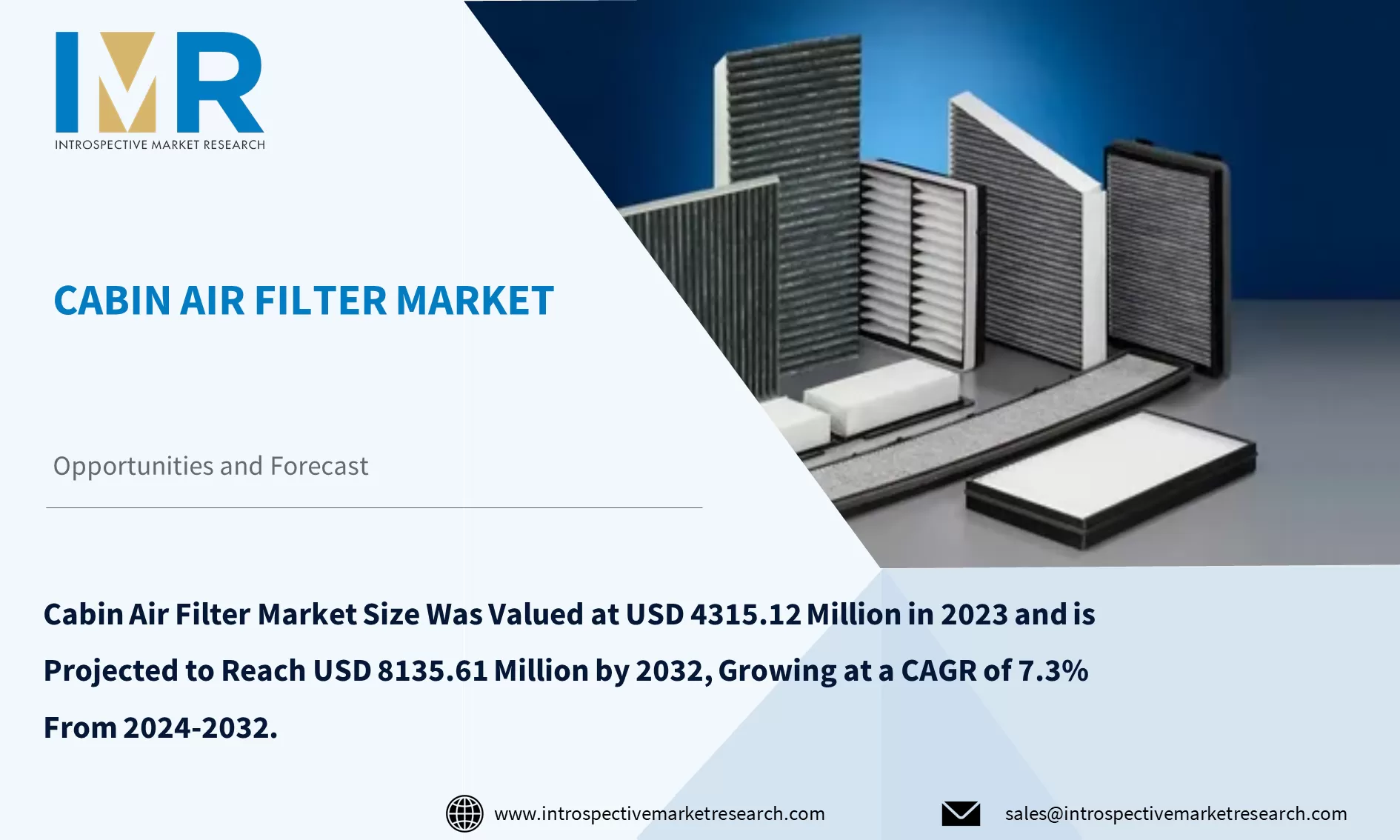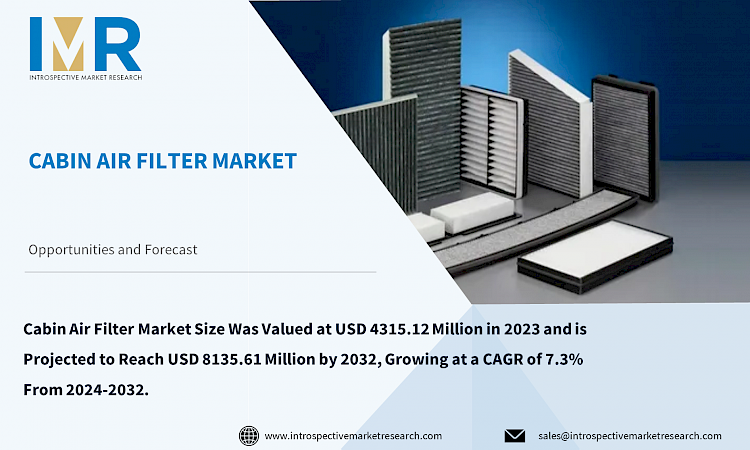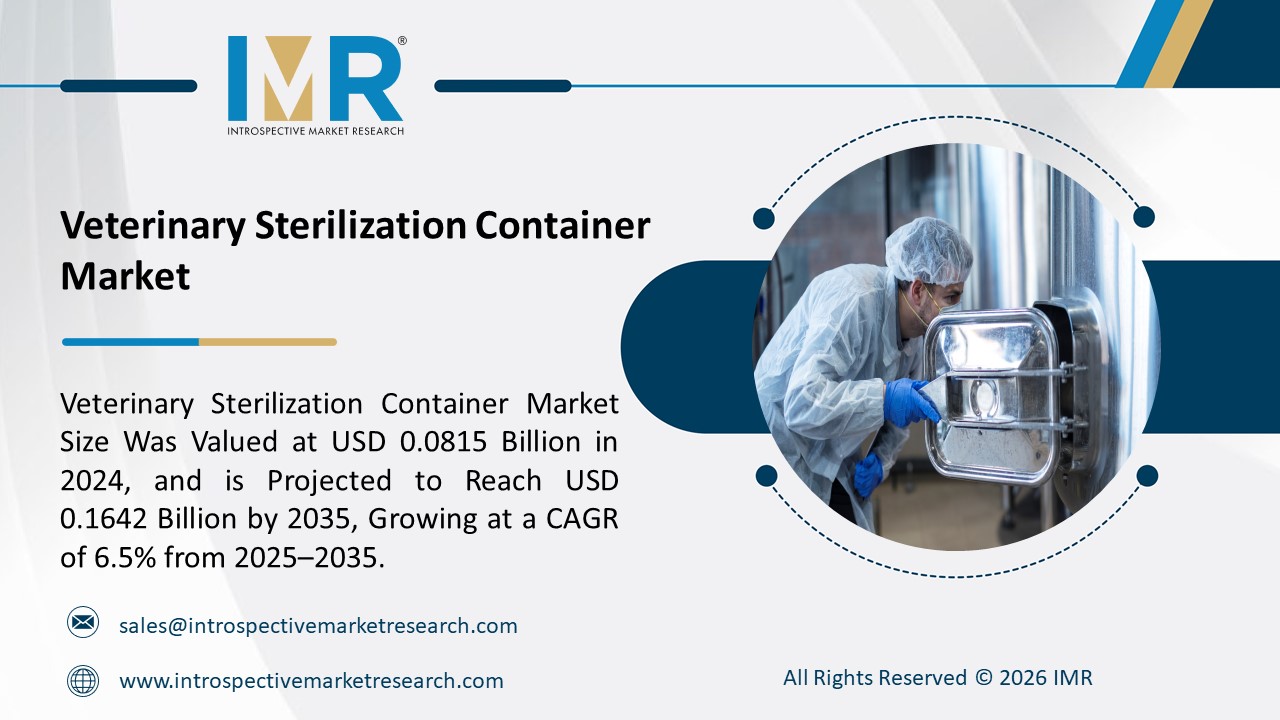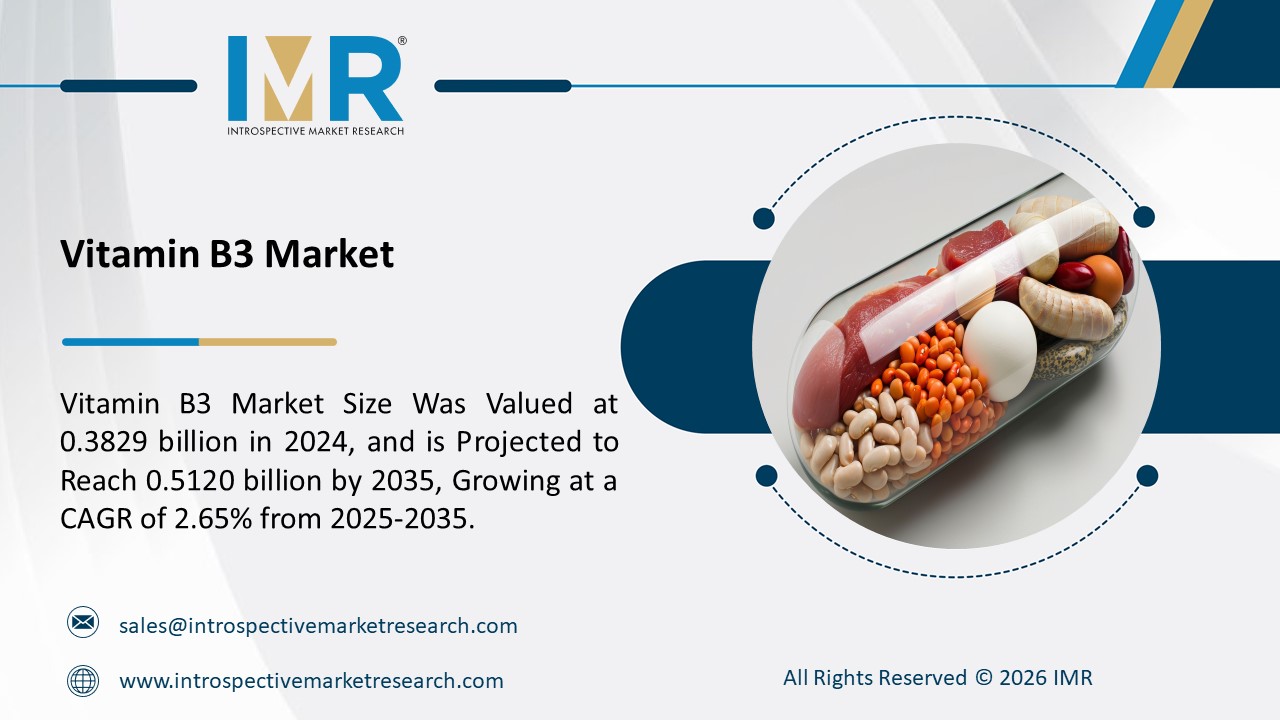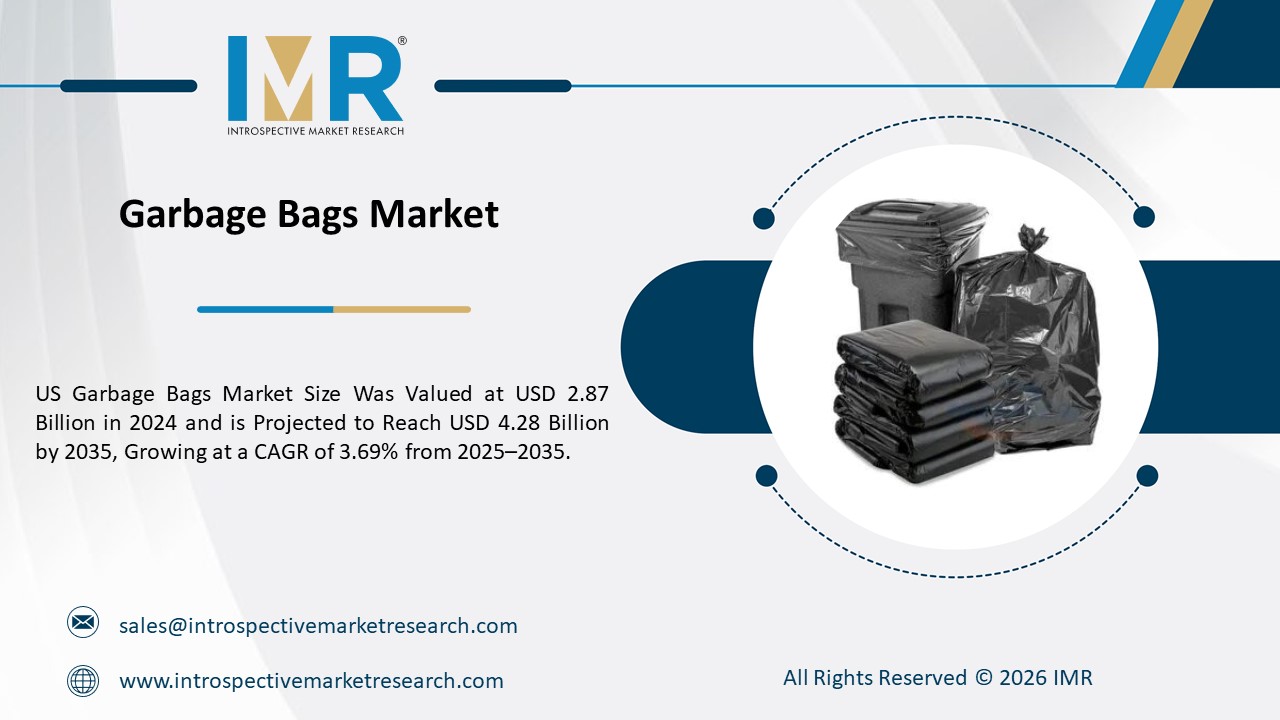Cabin Air Filter Market
According to a new report published by Introspective Market Research, titled, ?Cabin Air Filter Market by Type, Application, And End-Users: Global Opportunity Analysis and Industry Forecast, 2024?2032,?
the global Cabin Air Filter Market Size Was Valued at USD 4315.12 Million in 2023 and is Projected to Reach USD 8135.61 Million by 2032, Growing at a CAGR of 7.3% From 2024-2032.
The cabin air filter is a filter device installed in the vehicle's ventilation system that improves indoor air quality. It effectively captures and filters airborne particles, dust, pollen, allergens, and pollutants before they enter the vehicle cabin. This filter helps create a cleaner and healthier environment for passengers by reducing respiratory irritation and improving overall air circulation in the cabin.
Regular replacement of cabin air filters is essential to maintain optimal air quality and to ensure efficient operation of the vehicle's heating, ventilation, and air conditioning (HVAC) system. The cabin air filter market is growing due to its role in improving the indoor air quality of vehicles. As health awareness grows, consumers prefer cleaner air, which is why cabin air filters are being introduced. These filters effectively collect and block dust, allergens, and pollutants for a healthier driving experience. Cabin air filters incorporate advanced technologies such as activated carbon layers to improve odor removal, antimicrobial treatments to prevent microbes and high-efficiency particulate air (HEPA) filters to improve particulate filtration.
According to the global Cabin Air Filter market analysis, the market is divided by application, packaging type, material, and geographical division. By application, it comprises personal care packaging, health care packaging, food & beverage packaging, and others. By packaging type, it includes recycled content packaging, reusable packaging, and degradable packaging. Based on the material, the market is segmented into plastic, metal, glass, and others. By geography, it includes North America, Europe, Asia-Pacific, and LAMEA markets. Further, the report also covers the strategies adopted by key market players to sustain a competitive environment and increase their market share.
Awareness of the impact of air quality on well-being is growing, particularly in confined spaces such as vehicle cabins. Consumers prefer a cleaner and healthier environment during their daily travels, which increases the demand for cabin air filters. These filters play an important role in changing the entry of pollutants, allergens, and particles, creating a healthier experience. As air quality concerns grow worldwide, cabin air filters are becoming essential vehicles, reflecting concerted efforts to improve the driving experience and address health issues related to air pollutants. The market is expected to grow as health-conscious consumers continue to look for solutions to promote a cleaner and safer automotive environment.
Consumers are increasingly aware of the air quality in vehicle cabins, and there is a growing preference for advanced filtration technologies that remove finer particles, allergens, and pollutants. Behind this development is primarily a concern for respiratory health and the desire for a cleaner and healthier driving environment. Automakers are responding to this need by integrating efficient filtration systems such as HEPA filters into their cabin air filters. These filters enhance the excellent ability to capture microscopic particles and provide better protection against air pollutants. Effective filtration is a strategic move for manufacturers to adapt to the advanced technology in the market and promote overall growth and innovation in the cabin air filter market.
Global Cabin Air Filter Market, Segmentation
The Cabin Air Filter market is segmented based on Type, Application, And End-Users, and region.
Type:
The type segment is further classified into Regular Cabin Filters, Active Carbon Cabin Filters, HEPA Cabin filters, and Combined Filters. Among these, the Regular Cabin Filter sub-segment accounted for the highest market share in 2023. Standard cabin filters are the most commonly used and more widely used filters because they are cost-effective and more effective at capturing larger particles such as dust, pollen, and debris. Their affordability makes them the most popular choice, especially in the aftermarket segment, where price-conscious consumers are often looking for reliable and economical filtration solutions. Advanced technologies such as activated carbon and HEPA filters provide special functions. Most vehicles have a cabin filter as standard. As a result, the high prevalence of standard cabin filters in both original equipment and aftermarket increases their dominance in the overall market.
Application:
The application segment is further classified into Passenger Cars, Commercial Vehicles. Among these, the Passenger Car sub-segment is anticipated to show the fastest growth by 2032. In the passenger car segment, there is a large number of vehicles in traffic, increasing air quality and consumer health issues, and the standardization of cabin air filters in passenger car models. Car manufacturers are integrating advanced filter technologies to provide the best driving experience, responding to the global trend towards cleaner and healthier mobility solutions. This dominance is expected to continue as consumers spend more on advanced cabin air filters for a clean and comfortable driving environment.
Region:
The Cabin Air Filter market in Asia-Pacific is projected to show the fastest growth by 2032. The region is home to some of the world's largest automotive markets, including China, Japan, and India. Rapid urbanization, rising disposable incomes, and growing awareness of air quality issues in these countries are significantly increasing the demand for cabin air filters. As urban areas in the Asia-Pacific region grow with rising pollution levels, consumers are increasingly prioritizing a clean and healthy driving environment and increasing the adoption of cabin air filter systems.
The region's original equipment manufacturers (OEMs) are integrating advanced cabin air filter technologies into their vehicles to meet changing consumer preferences. The implementation of strict emission standards and regulations will force the market to continue to meet quality standards. Asia Pacific is expected to dominate the cabin air filter market due to increasing market demand, growth in the automotive industry, and the need for a cleaner and healthier driving environment.
Some of The Leading/Active Market Players Are-
- FRAM (USA)
- WIX Filters (USA)
- Cummins (USA)
- Donaldson (USA)
- Clarcor (USA)
- ACDelco (USA)
- Sogefi (Italy)
- UFI Group (Italy)
- Mann+Hummel (Germany)
- Mahle (Germany)
- Freudenberg (Germany)
- BOSCH (Germany)
- APEC KOREA (South Korea) and Other Active Players
Key Industry Developments
- In March 2024, Bosch was replacing the proven FILTER+ cabin filter with the enhanced FILTER+pro. Following extensive air-quality tests, the independent certification body OFI CERT, based in Vienna, Austria, had previously confirmed the product?s excellent filtration performance. Among other things, OFI tested and confirmed the product?s ability to filter and reduce allergens. The tests also confirmed that FILTER+pro reduces the risk of germ transmission. With several coordinated filter layers, the enhanced product ensures cleaner, largely pollutant-free air in the vehicle cabin, better protects vehicle occupants? health and offers them more comfort. This makes it particularly suitable for people who suffer from allergies.
- In January 2023, Panasonic Automotive Systems Company, United States, announced the launch of its nanoe X portable in-vehicle air cleaner designed to enhance and maintain cabin air purity in the North American market.
Key Findings of the Study
- The global cabin air filter market was valued at USD 4315.12 million in 2023 and is projected to reach USD 8135.61 million by 2032, growing at a CAGR of 7.3% from 2024 to 2032. This growth is driven by increasing consumer awareness of air quality in vehicle cabins and the demand for cleaner and healthier driving environments.
- The market is segmented by type into Regular Cabin Filters, Active Carbon Cabin filters, HEPA Cabin filters, and Combined Filters. Regular cabin filters, due to their affordability and effectiveness in capturing larger particles like dust and pollen, dominate the market, especially in the aftermarket segment.
- Asia-Pacific is expected to exhibit the fastest growth in the cabin air filter market by 2032. This growth is fueled by rapid urbanization, rising disposable incomes, and heightened awareness of air quality issues in countries like China, Japan, and India. Automakers in the region are increasingly integrating advanced filter technologies to meet stringent emission standards and consumer demands for cleaner air in vehicle cabins.
- Advanced filtration technologies such as HEPA filters and activated carbon layers are gaining traction. These technologies enhance filtration efficiency, capturing finer particles, allergens, and pollutants, thereby improving overall air quality and driving experience.

